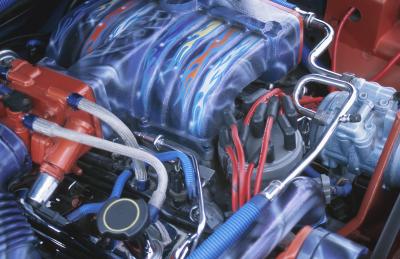
In most vehicles manufactured since the 1970s, an on-board self-diagnostic system has monitored engine performance. When it senses a fault, the system notifies the driver via a malfunction indicator lamp -- most commonly “Check Engine” -- that diagnosis and repair is required. One of the components the system checks is the camshaft sensor.
Diagnostic fault codes are interpreted by a technician using a computer called a scanner. The scanner displays codes that give technicians an umbrella diagnosis; this is followed up by component testing to determine the exact issue. The diagnostic fault code for a camshaft position sensor problem is P0343. The camshaft position sensor does not control any mechanical component or mechanical function; it controls the information sent to the scanner to inform the technician that a problem exists.
The camshaft position sensor works in tandem with the crankshaft position sensor to monitor the engine’s timing which, in turn, affects the efficiency of fuel delivery and the sparking mechanisms. The camshaft position sensor is typically referred to as a CMP; the crankshaft position sensor is typically referred to as a CKP.
The diagnostic fault code for a crankshaft position problem is P0016. First the crankshaft position sensor does exactly that -- senses the position of the crankshaft -- and sends that information to the ignition module or powertrain control module, a PCM in industry-speak. The ignition module or PCM twins this information from that relayed by the camshaft position sensor to manage the ignition sequence. The two must be synchronized, and the synchronization is called timing. Any misstep between the two is likely to be caused by a faulty timing belt or chain.
Aside from the illumination of a malfunction indicator lamp the driver of a mistimed vehicle is likely to notice conspicuously reduced performance -- if indeed the engine starts at all -- and overrun when the ignition is switched off.
The fault is almost always poor timing. Poor timing in an engine that previously ran well can be the result of the timing belt stretching or slipping, or the timing chain skipping a tooth, depending on engine design. Both chains and belts can stretch under normal operation; the tensioner intended to accommodate this wear and tear could have failed. It is also possible that one of the two sensors, the camshaft or crankshaft, has gone bad and is transmitting erroneous information.